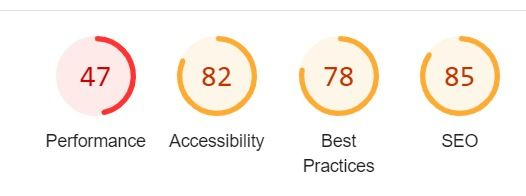Streamlining HR Workflows: How Corporate Leave Management Apps Boost Efficiency
Leave Management Through Corporate Mobile and Web Apps: Streamlining HR Workflows
Managing employee leave requests, approvals, and tracking can be a cumbersome task for Human Resources (HR) departments, especially in large organizations. With the advent of corporate mobile and web applications, leave management has evolved into a more efficient, transparent, and user-friendly process. Here’s how implementing a leave management system via apps can significantly ease the workflow in HR departments.
1. Centralized System for Leave Requests and Approvals
Traditional leave management often involves paperwork or emails, which can lead to delays and human errors. A mobile or web app centralizes the leave request process, allowing employees to submit their requests digitally. HR personnel and managers can easily access these requests, review leave balances, and approve or reject them with just a few clicks. This centralized system:
- Eliminates paperwork.
- Minimizes processing time.
- Reduces the chances of missed or lost requests.
2. Real-Time Data Accessibility
HR professionals need access to real-time data to manage workforce availability effectively. A leave management app provides instant visibility into employees’ leave status, pending requests, and leave balances. For managers, it’s easy to see who is on leave and plan work distribution accordingly. Key features that enhance accessibility include:
- Dashboard views for leave status.
- Notifications and alerts for pending approvals.
- Real-time updates for employees and managers.
3. Automated Leave Calculations
One of the most time-consuming tasks in leave management is the calculation of accrued leave, available leave, and ensuring compliance with company policies. An app automates these calculations, reducing the manual effort involved. Leave accrual, carryovers, and encashments are handled automatically, ensuring accuracy and transparency for employees and HR alike. Some key automation features include:
- Auto-calculation of leave balance.
- Compliance with company leave policies.
- Automatic updates on accruals and deductions.
4. Mobile Accessibility for Employees
Mobile apps bring flexibility to the table, enabling employees to apply for leaves on the go, from anywhere. This mobility makes it easier for employees to manage their leave without needing to be in the office or use a desktop. In addition, mobile accessibility:
- Increases convenience and engagement.
- Reduces the processing bottlenecks.
- Promotes a digital-first approach in company culture.
5. Compliance and Reporting
A leave management app ensures that HR departments stay compliant with labor laws and internal policies. Automated records help maintain accurate and up-to-date leave data for audits and legal purposes. Additionally, HR can generate comprehensive reports on leave patterns, absenteeism, and leave type usage, which supports strategic decision-making. Benefits include:
- Easy compliance with legal frameworks.
- Customizable reports for management.
- Transparency in tracking leave trends.
6. Integration with Payroll and Other HR Systems
A modern leave management system integrates seamlessly with other HR systems, such as payroll and attendance tracking, ensuring that there are no discrepancies in employee compensation. For example, an integrated system can automatically update salary adjustments based on unpaid leaves, ensuring correct payroll processing. Benefits of integration include:
- Avoiding duplicate entries across systems.
- Streamlining payroll deductions for unpaid leaves.
- Ensuring synchronized updates across HR systems.
7. Employee Self-Service Portals
Self-service functionality is a cornerstone of any mobile or web-based leave management app. Employees can log in, check their leave balances, view the company’s leave policy, and submit leave requests without requiring direct HR intervention. This not only empowers employees but also reduces the HR department’s workload, as employees can resolve basic queries independently. Self-service features include:
- Instant access to leave history and balances.
- Access to company leave policy and updates.
- One-click leave requests and tracking.
8. Data Security and Privacy
With sensitive employee information involved, a corporate leave management app ensures that data privacy and security standards are maintained. Data encryption, role-based access control, and secure servers ensure that only authorized personnel can view and modify leave information, thus maintaining confidentiality and compliance with data protection regulations.
Conclusion
Implementing a corporate mobile or web-based leave management app can drastically reduce the administrative burden on HR teams. From simplifying leave requests and approvals to ensuring compliance and generating insightful reports, these systems are vital in creating a more streamlined, efficient, and employee-friendly HR workflow. By automating key processes and offering real-time accessibility, HR departments can focus on strategic tasks rather than being bogged down by repetitive administrative duties.
As businesses continue to adopt digital transformation strategies, leave management apps stand out as an essential tool for fostering transparency, improving employee satisfaction, and enhancing organizational efficiency.
Reach out to us for a free demo and a free consultancy with a HR expert.



